Summertime…and the living is easy. And that means hanging out at the beach be it by the sea, lake, or river. There’s something about water especially warm, gently moving water that shifts our inner spirit. When I think about being at the seaside, in my mind up pop the wave paintings by Jeanne Rosier Smith.
I happened to pass Jeanne in the hallways of IAPS back in June and casually called out, “I’d love you to write a guest blog – are you up for it? And if so, can you manage to get it done for July?” Happily Jeanne said, “For Sure!” AND she came through even though she only had about a month to put it together!
Here’s a teaser to show you an example before we get to Jeanne’s post:

Jeanne Rosier Smith Bio
Jeanne Rosier Smith studied Art and English at Georgetown University and later received her PhD in English from Tufts University. Her home and studio are in Sudbury, MA, where she is learning to love painting snow in winter, when she’s not escaping to the beach. She is a member of the Copley Society and the Salmagundi Club, an IAPS Masters Circle member, and a signature member of PSA, CPS, and PPSCC. You can see more and catch up on her blog on her website.
Jeanne also has a series of 3 DVDs coming out on painting seascapes. The first one – The Anatomy of a Wave – is now available in DVD and will soon be available as a download through F+W.

Jeanne Rosier Smith: Tuning in – How I learned to find my voice by listening to it.
Just before graduating from college with a degree in biomedical marketing, my daughter shyly confessed to me she’d realized she wanted to switch gears entirely, and go to grad school to become a science teacher. I was thrilled. It seems switching gears is a family tradition, and she was brave enough to make a change early. I earned a PhD in English, and spent 10 years teaching in universities before finally figuring out that I’d be much happier as an artist.
I have painted ever since I can remember. When I studied abroad in Nice, France during my junior year of college, I had to fit all my belongings for a year into one suitcase. I chose art supplies over clothes, and covered my dorm room walls with paintings. In graduate school, any free moment was spent at my easel. When my three children were very small, my Mother’s Day request was always time to paint. Now that I’ve listened to all those signals and changed careers, every day is Mother’s Day.
In 1998, shortly after my youngest son was born, my uncle, a high school art teacher in western Massachusetts, sent me a portrait box of 48 Nupastels with a note: “You might enjoy these.” He could not have known what a profound affect this gift would have on my life. Once I touched pastel, I was immediately hooked. It seemed I was finally able to express what I needed, in the way I wanted. Although I had been painting for years, pastel felt like a revelation. The medium fit my personality. Not one for delayed gratification, I like to work quickly, and I intuitively know what colors I want. Pastel offers me a banquet of color at my fingertips and the promise of myriad beautiful layers of visual combinations. The mix of painting and drawing appealed to my skills and training.
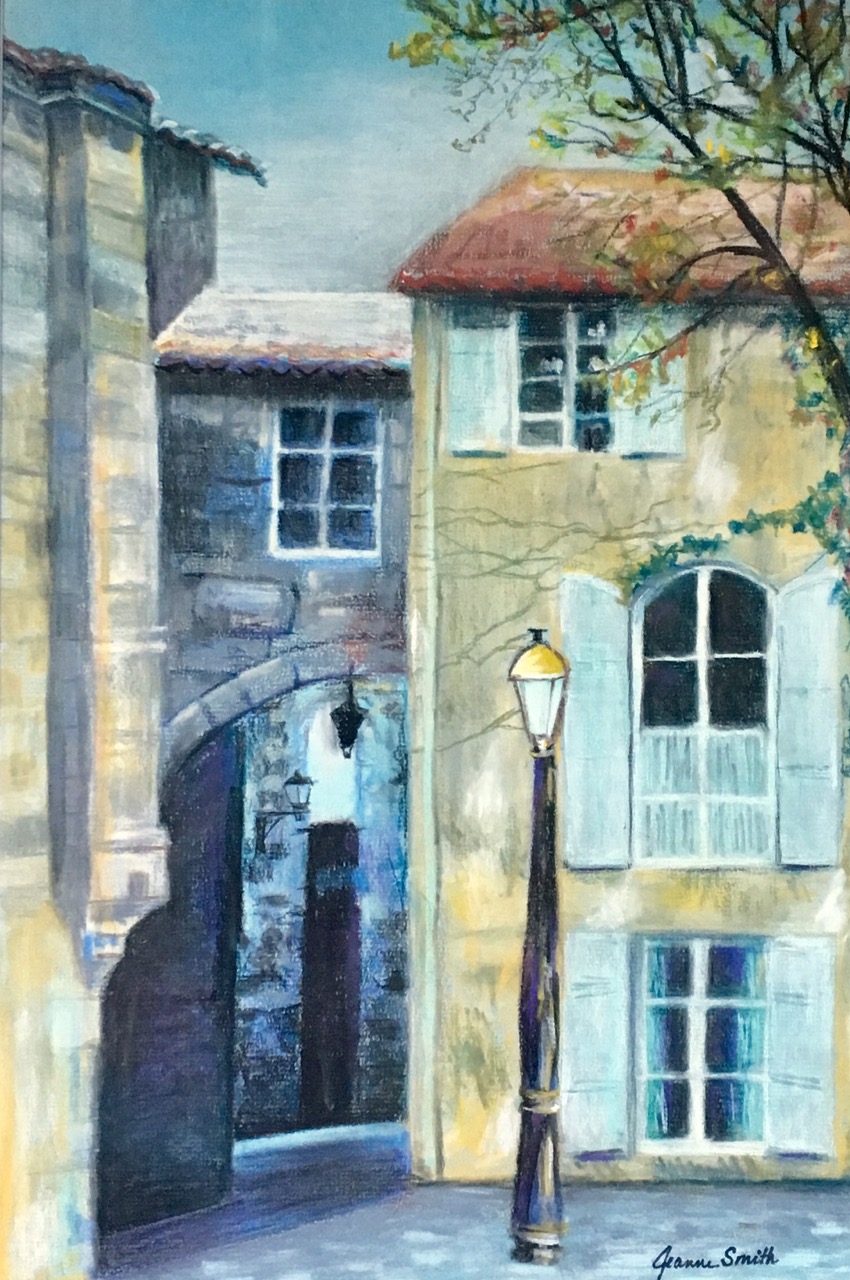
I played with those Nupastels for the next two years, along with a set of Winsor & Newtons I’d received as a birthday gift. I did not have the time or budget for classes, so those pastels and Elizabeth Mowry’s wonderful book, Painting the Four Seasons in Pastel, were my training. I owe a huge debt of gratitude to Elizabeth’s book. She advises beginners to make friends with their pastels, spend time with them and get to know their individual quirks. Though I’d always loved art, the ease with which I took to pastel allowed me to start thinking of myself as an artist. I discovered a facility for portraiture which brought me commissions and interested students, and allowed me to think of switching careers.
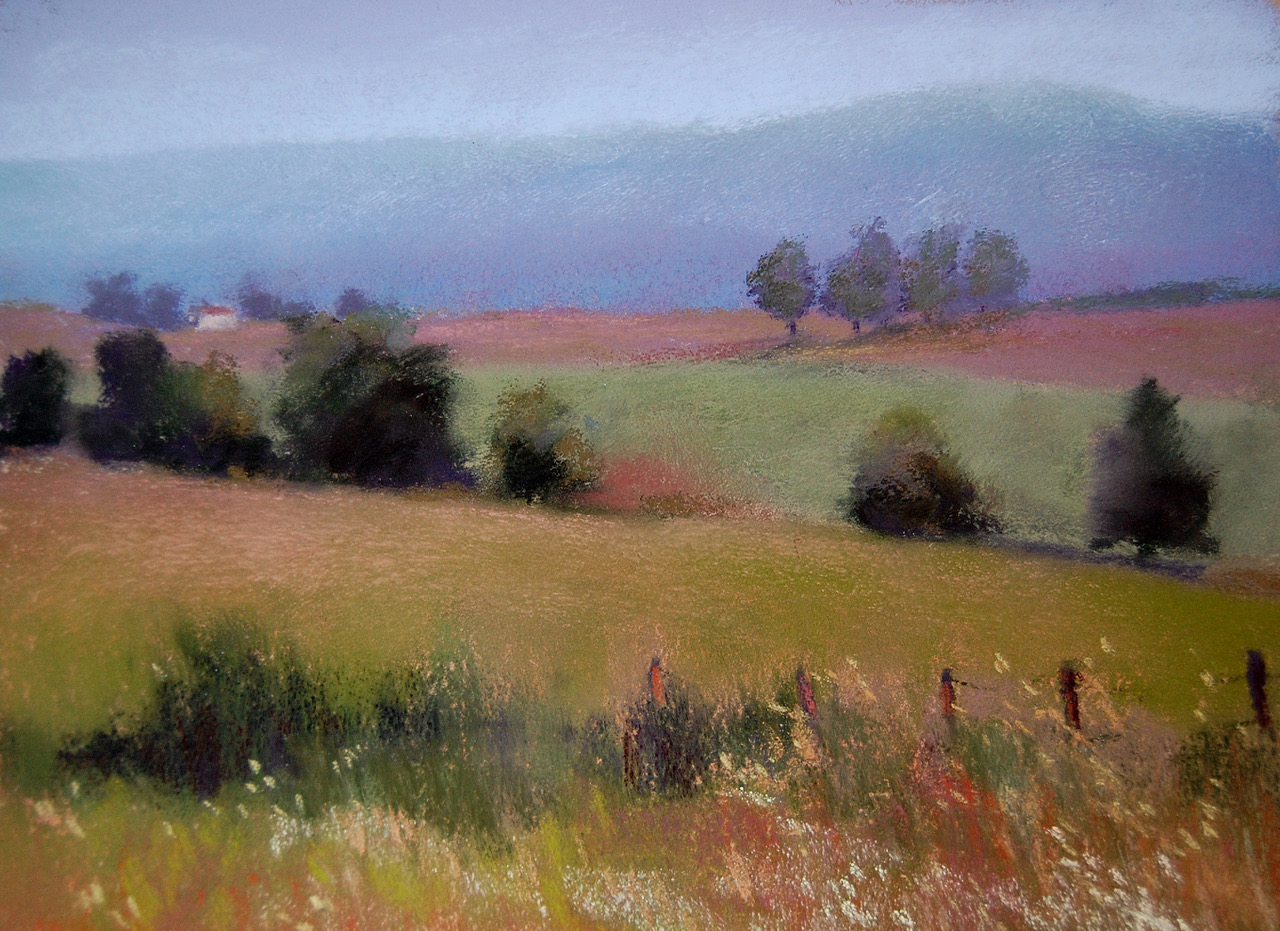
Eventually, I had the luck to land in a portrait class taught by Rhoda Yanow (PSA Hall of Fame 2017 honoree) for my first pastel class. Rhoda was tremendously inspiring and encouraging, introduced me to real soft pastels, local openings, and the Pastel Society of America (PSA).
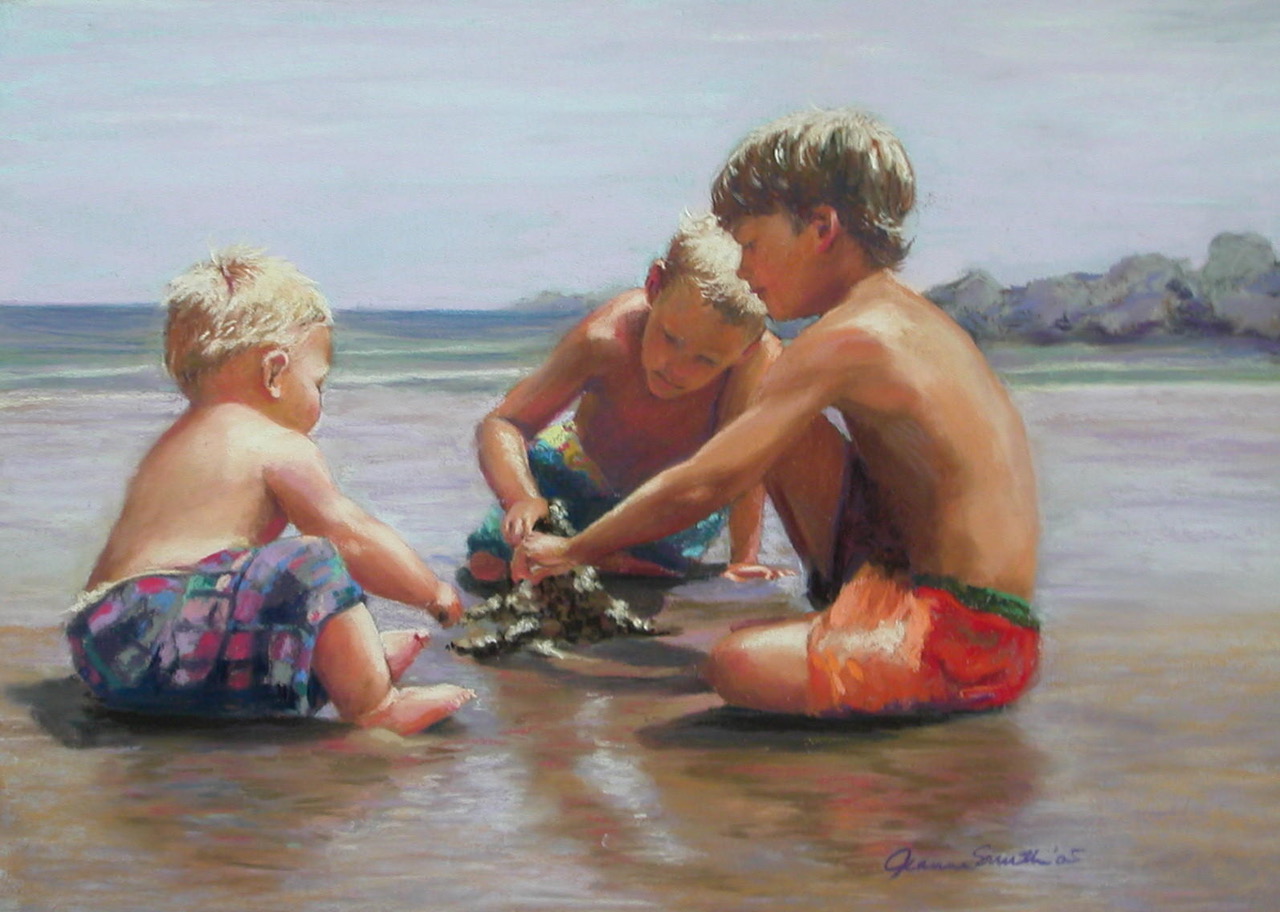
My continuing education in pastel was self-directed. Since you can’t take the PhD out of the girl, I looked to the experts in the field and studied their sources. Richard McKinley mentioned he learned about landscape from John F. Carlson’s Guide to Landscape Painting and Kim Lordier recommended Arthur Wesley Dow’s Composition and Edgar Payne’s Composition of Outdoor Painting. Reading those helped me feel grounded and gave me historical perspective.
Surprising as this may sound, the most important factor in my continued development as an artist has been my teaching. For seventeen years I have taught ongoing classes, the past ten in my Massachusetts studio. By continuously improving, my students have pushed me to dig deeper and go further, forcing me to articulate my process and expand my understanding.
My seascape series began nine years ago, as a class demo in a series I taught on water. One day I thought it would be fun to paint waves, so for my three Tuesday classes, I did three 8” x 8” demos. All three demos quickly sold at a gallery I’d recently joined on Nantucket—which was great encouragement to paint more waves!

I grew up vacationing with my family in Ocean City Maryland and the Outerbanks of North Carolina. I was a competitive swimmer, and spent my time at the beach, a week or two each summer, in the waves, body surfing, playing ‘jump or dive’ with my cousins, staring at the waves and deciding whether to jump over or under, or ride one in to shore. After a day of bodysurfing, I loved closing my eyes at night: I marvelled at the sensation that I was still being rocked by the sea.

Maybe this visceral connection to the waves explains why the subject grabbed me so when I completed those first three studies. Since then, I’ve painted literally hundreds of seascapes—but each one feels fresh and exciting. The tides are always changing, and the light, seasons, air quality, and time of day all effect the mood of a piece. It is a different challenge every time.

Like many people, I associate the ocean with the best family memories. The rhythm of the surf and the power and vastness of the coastal landscape soothe small human concerns. If I am working in the studio, whatever I have on my easel is a meditation: if it’s a portrait, I am in quiet dialogue with the model. And if it is a seascape, it is a day at the beach.
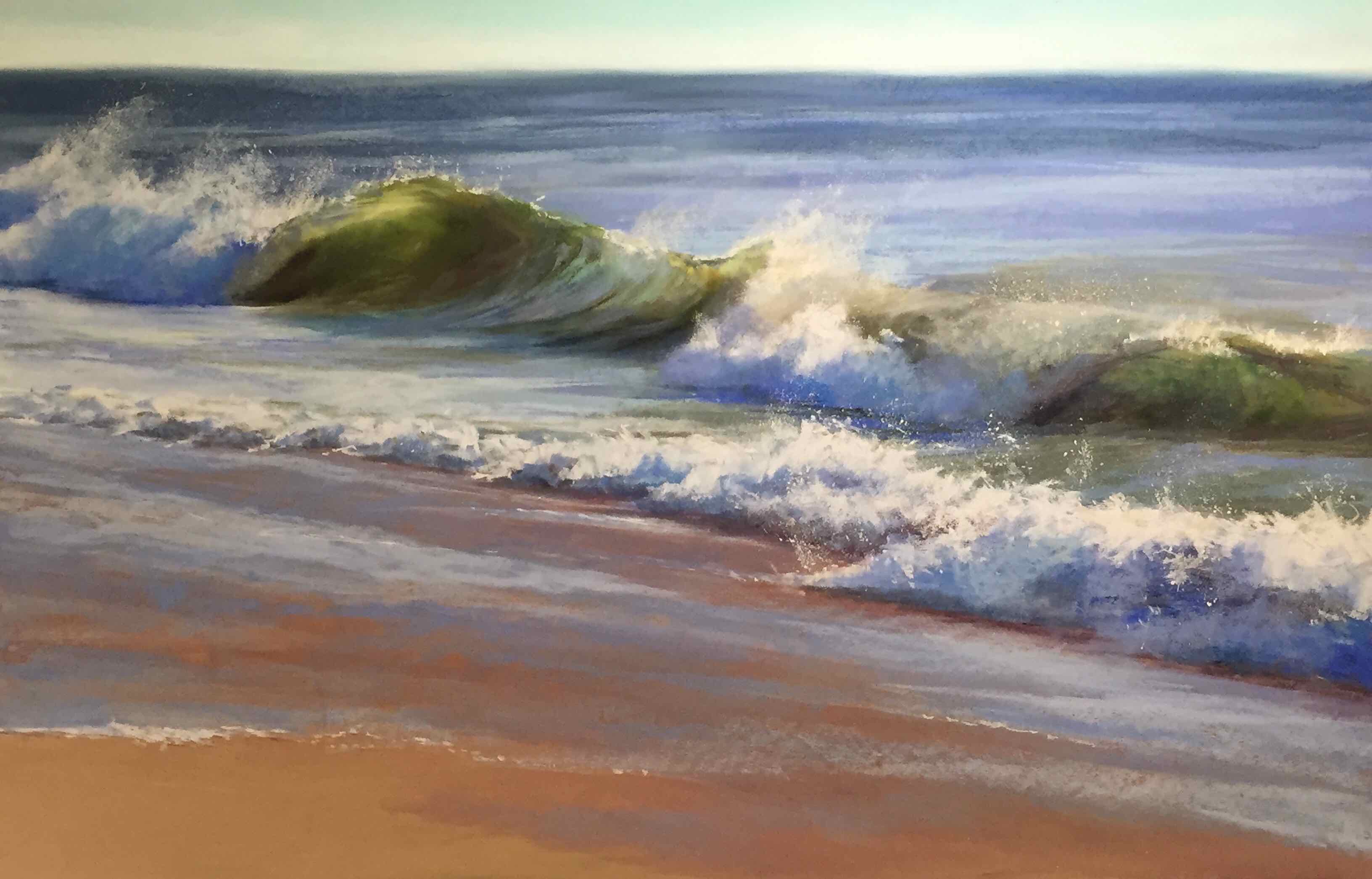
Recently I’ve noticed that being known for a particular subject has some surprising pitfalls. It creates expectations in the minds of other artists, judges, or collectors. I love painting seascapes—and I also love painting the beautiful New England countryside where I live. I occasionally love to paint food, and portraits. I’m starting to experiment with abstracts. Why not? Everything is the same, isn’t it? Line, shape, color, value, design.
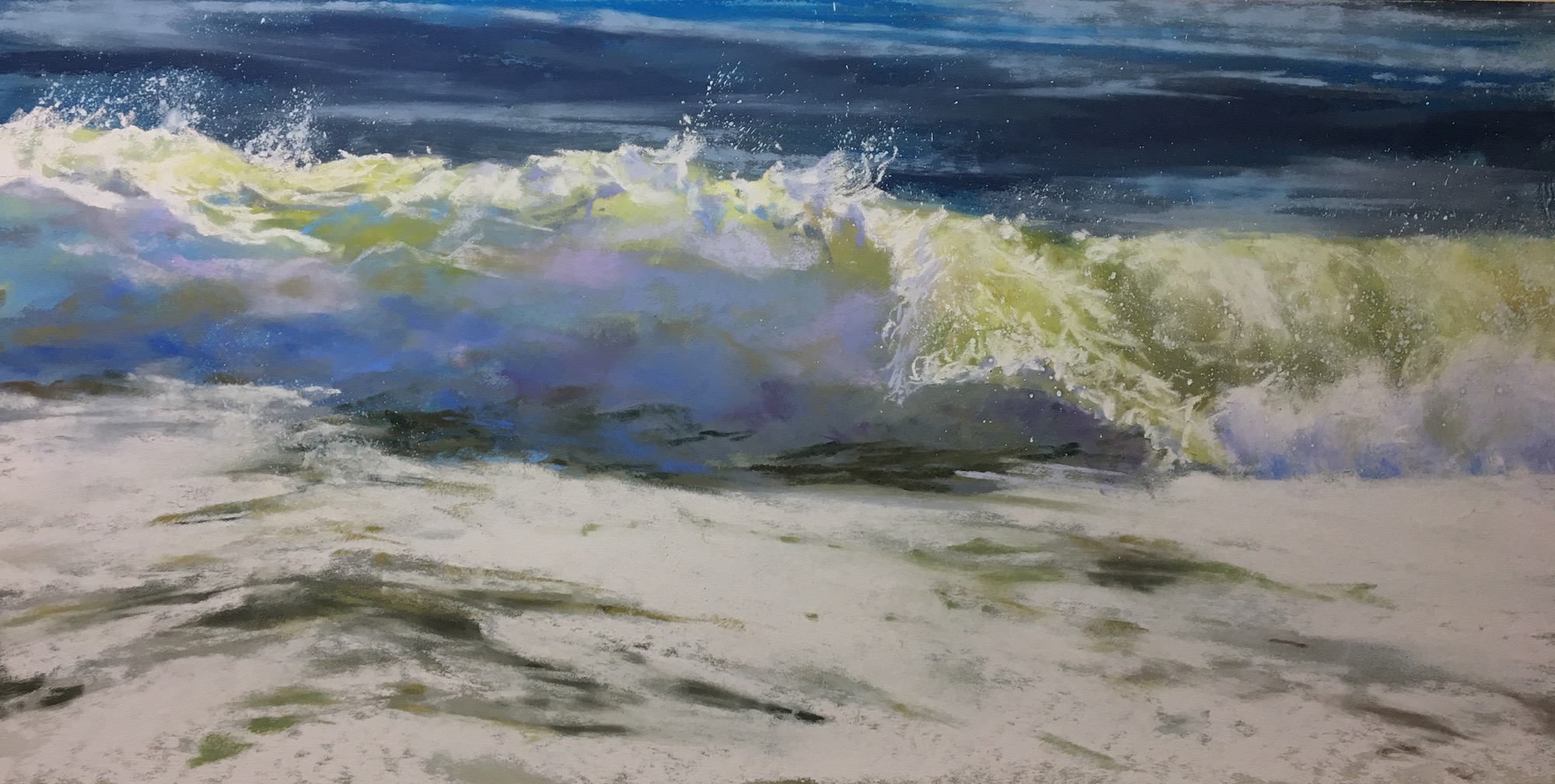
When I hear surprise or dismay from a competition judge that I didn’t enter a seascape in a particular show, (or, that I DID—and they wished I’d gotten out of my ‘comfort zone’) I don’t let it sway me. It’s impossible to predict a judge’s wishes. If I enter a national competition, I try to focus on choosing the best work I have available at hand, at the time, for that show, and also on the pleasure of being in the show. Entering to win awards or impress a judge is a losing proposition: it’s best to focus on things one can control, rather than putting too much stock into a system which insists there must be one ‘best’ in a show of amazing work.

As a working professional I have come to understand the importance of directing my work appropriately for different markets. I have one inland gallery for most of my landscape work, and two coastal galleries that primarily handle seascapes. Right now, since I earn my living as an artist, my galleries come first, so that’s where I direct my time and energy.
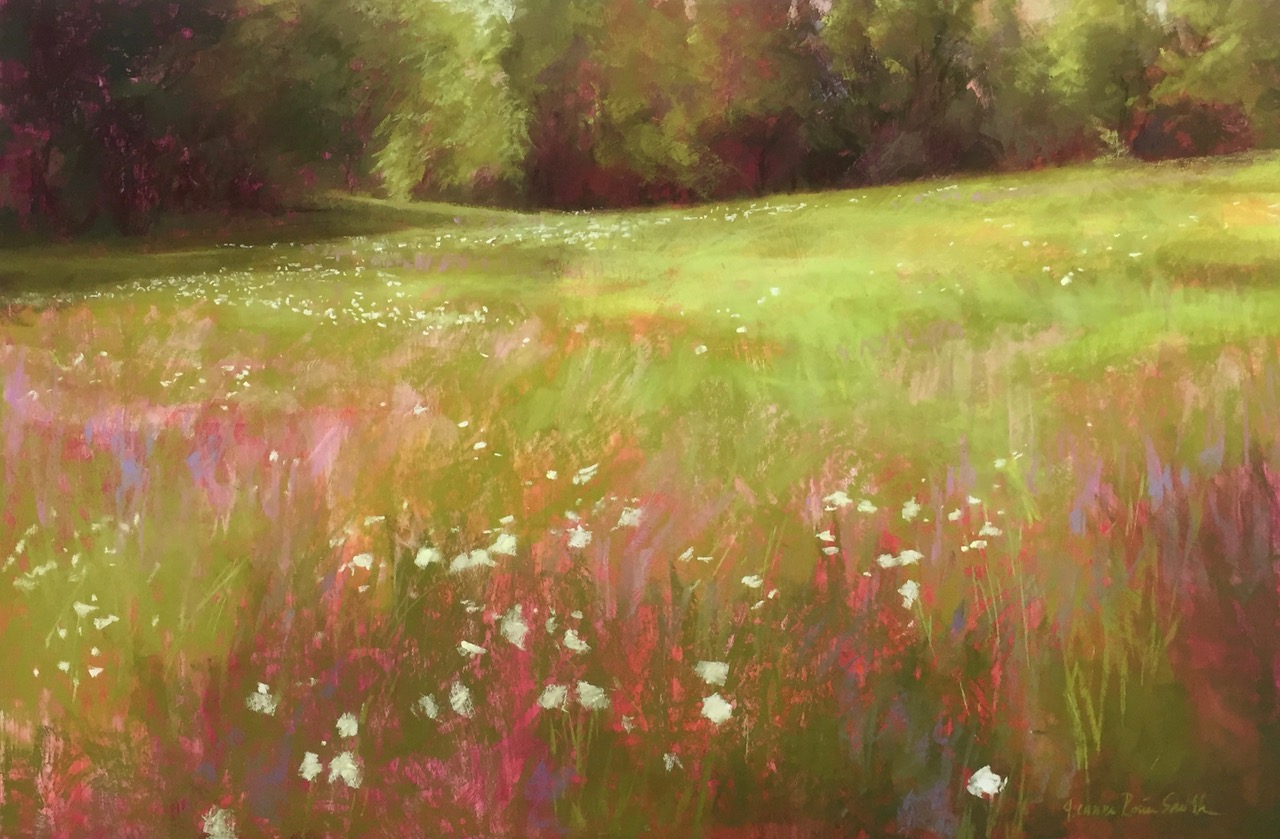
Let me share with you a bit of my process for planning a painting. I begin with a photo reference, often cropped, zoomed in to reveal the best dramatic shapes. Next I create a thumbnail sketch on toned paper, using black and white charcoal pencils. The white charcoal is a great tool for wave sketches, as it allows me to design the foam purposefully. I often jot words next to the sketch, which clarify my visual idea, and sometimes suggest my title. Believe me, after hundreds of waves I’m always looking for seascape titles!
This photo was taken very early morning after a storm, the best time for catching waves!

My thumbnail sketch emphasizes the foam angling back toward the illuminated focal point: the translucent water in the wave’s crest.

The underpainting includes none of the foam: that goes on in later, dry layers. Colors are local, strokes move in the direction of the water’s movement. My goal is to capture accurate value, color, and water movement in the underpainting.
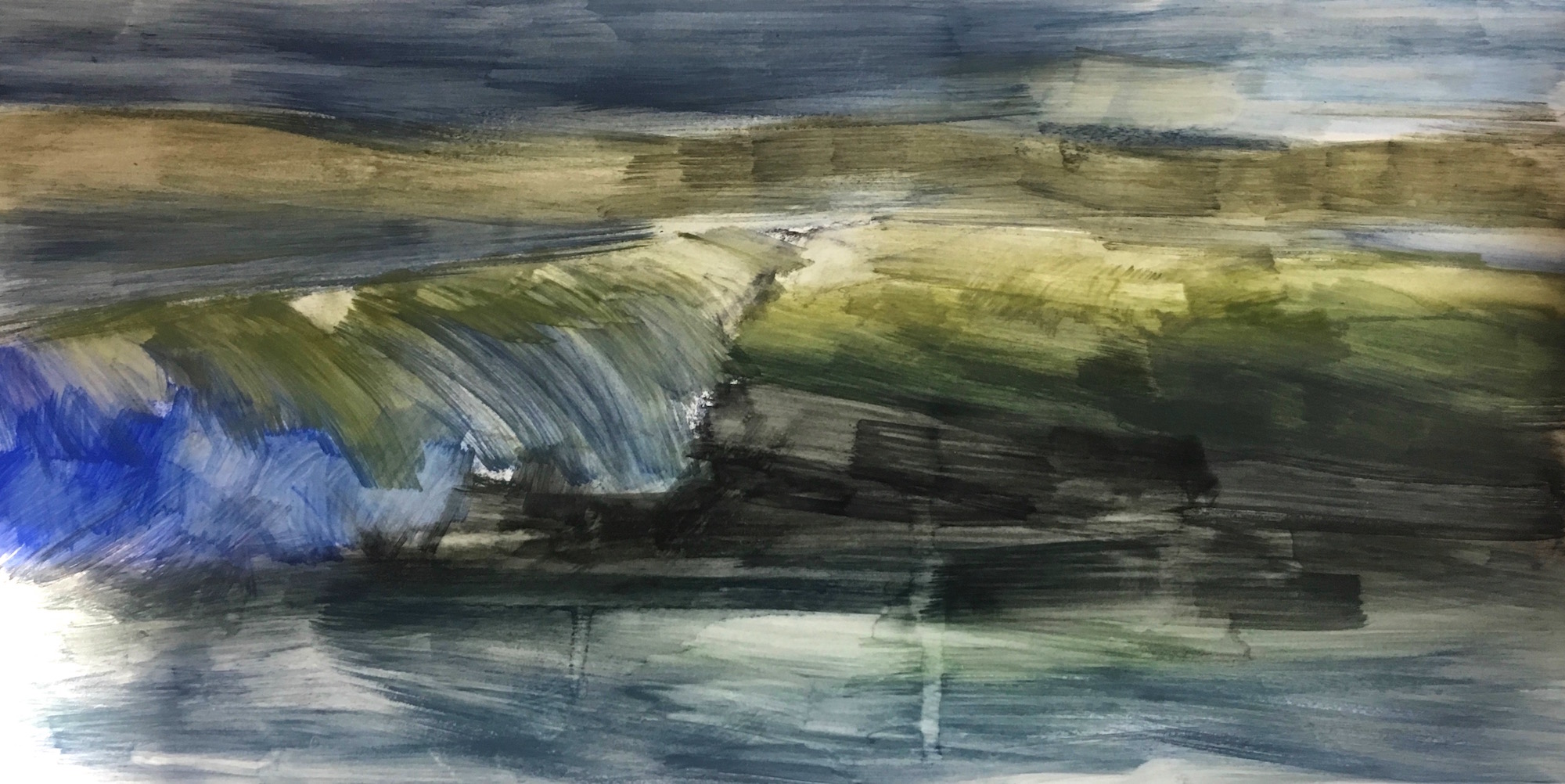
Next, I layer on background color and begin to lay in the lights, to create movement and volume.

Last, I add the threads of foam in the foreground, and with a toothbrush charged with wet white pastel, create liquid splash in the highlights.
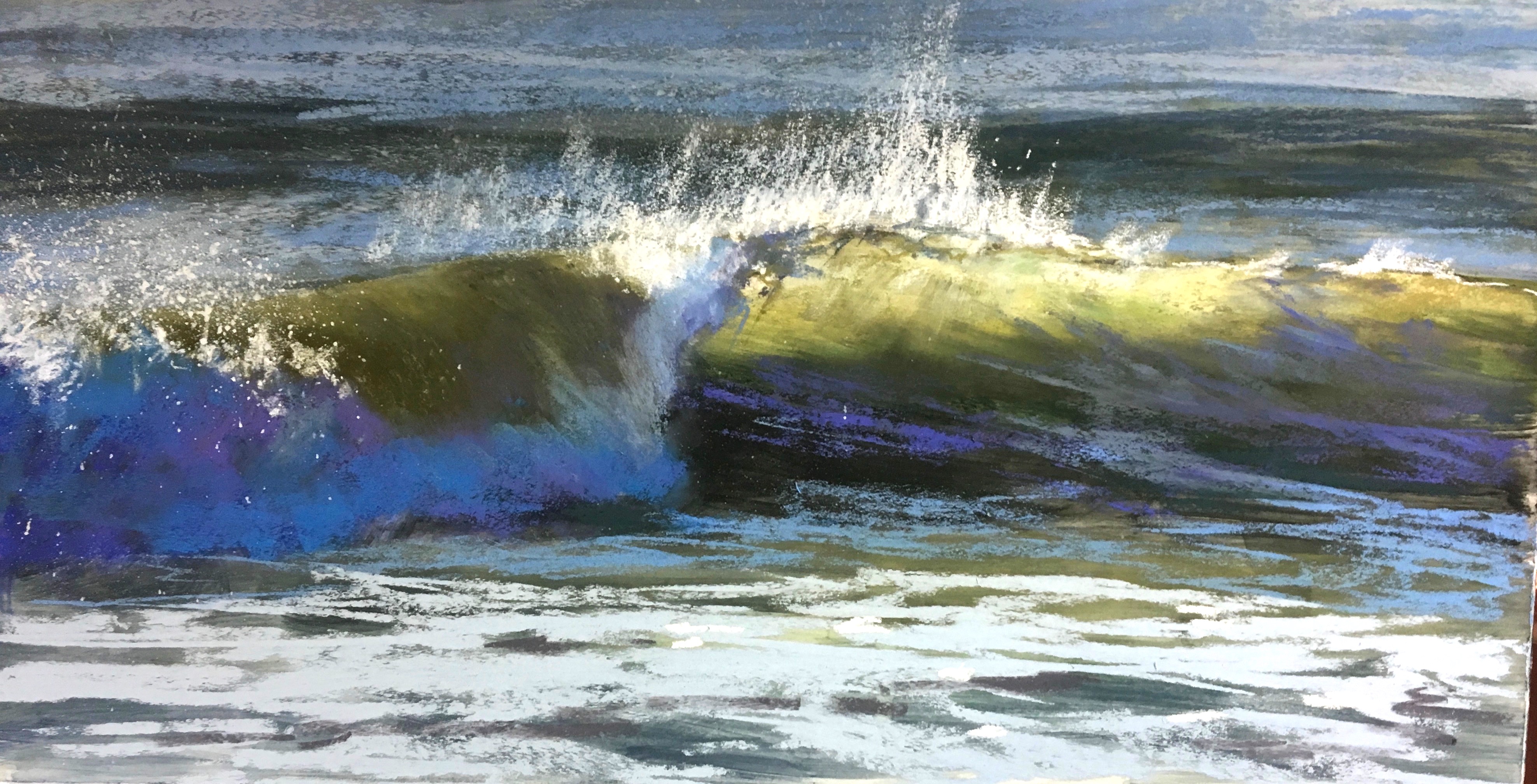
This painting was created as a demo during an opening at Cecil Byrne Gallery in Charleston this spring. Unlike a formal large group demo, gallery opening demos allow me time to both concentrate more on the painting, and also chat in a more informal setting with gallery collectors, making for a fun evening and a finished piece.
Sometimes that still small voice inside is so hard to hear above the roar of everything else: family expectations, self-imposed doubts, the expectations of our peers, societal assumptions. As my art life has grown over the years, I’ve learned to trust that inner voice more and more, and to understand that nurturing my artistic instinct is the surest path to success. Inspiration is primary, audience is secondary.

When choosing what to paint, I go for what inspires and excites me, and trust that I will be able to find an audience for it. For me, that choice is seascapes about 50% of the time right now. I always want to feel like I’m expanding and experimenting and playing in my work. A sense of adventure is probably the most important thing I try to bring with me into the studio every day.
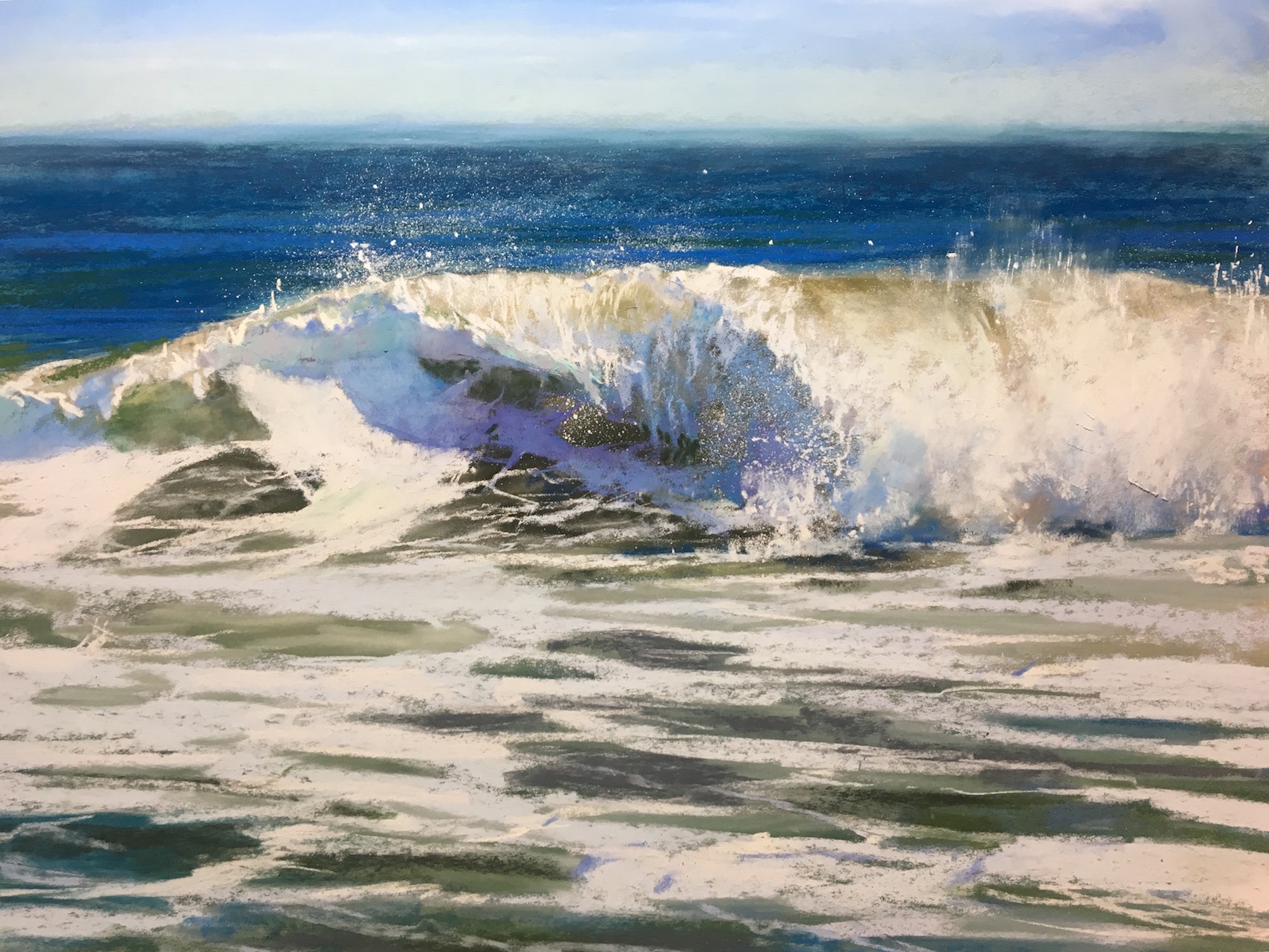
~~~~~
Wow – I loved reading about and seeing Jeanne Rosier Smith’s artistic journey! Thanks so much Jeanne!!
By the way, for those of you living in the Orleans, Massachusetts area, Jeanne is currently working on a new series of seascapes for a solo show – “Heat Wave” – at Gallery 31 Fine Art, 17 August – 7 Sept 2017. Grab the chance to see her paintings close-up and in person, then feel free to report back here.
In the meantime, Jeanne and I would love to hear your comments!! For instance, which is your favourite painting here and why? Or how about telling us what you think of the idea of moving beyond what you’ve become known for? We look forward to hearing from you!
Until next time,
~ Gail
Books mentioned by Jeanne:
PPS. I just HAD to share this!! I have a couple of pastels in the current issue of Pratique des Arts Pastel issue. That’s cool for sure. But guess what totally blew me away?? One of the pieces is on the COVER!! That was a seriously awesome surprise 😀
And guess what? Jeanne Rosier Smith has an article in this issue!
This is a FANTASTIC magazine. I just wish there was an english version for those of us not so great in the french language.😜

.



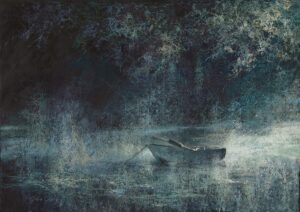
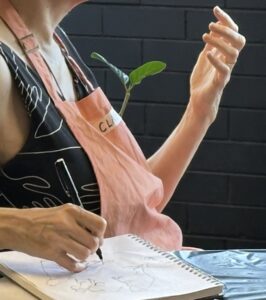
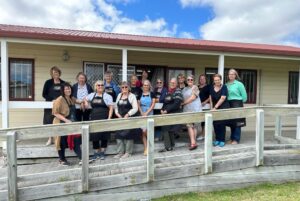




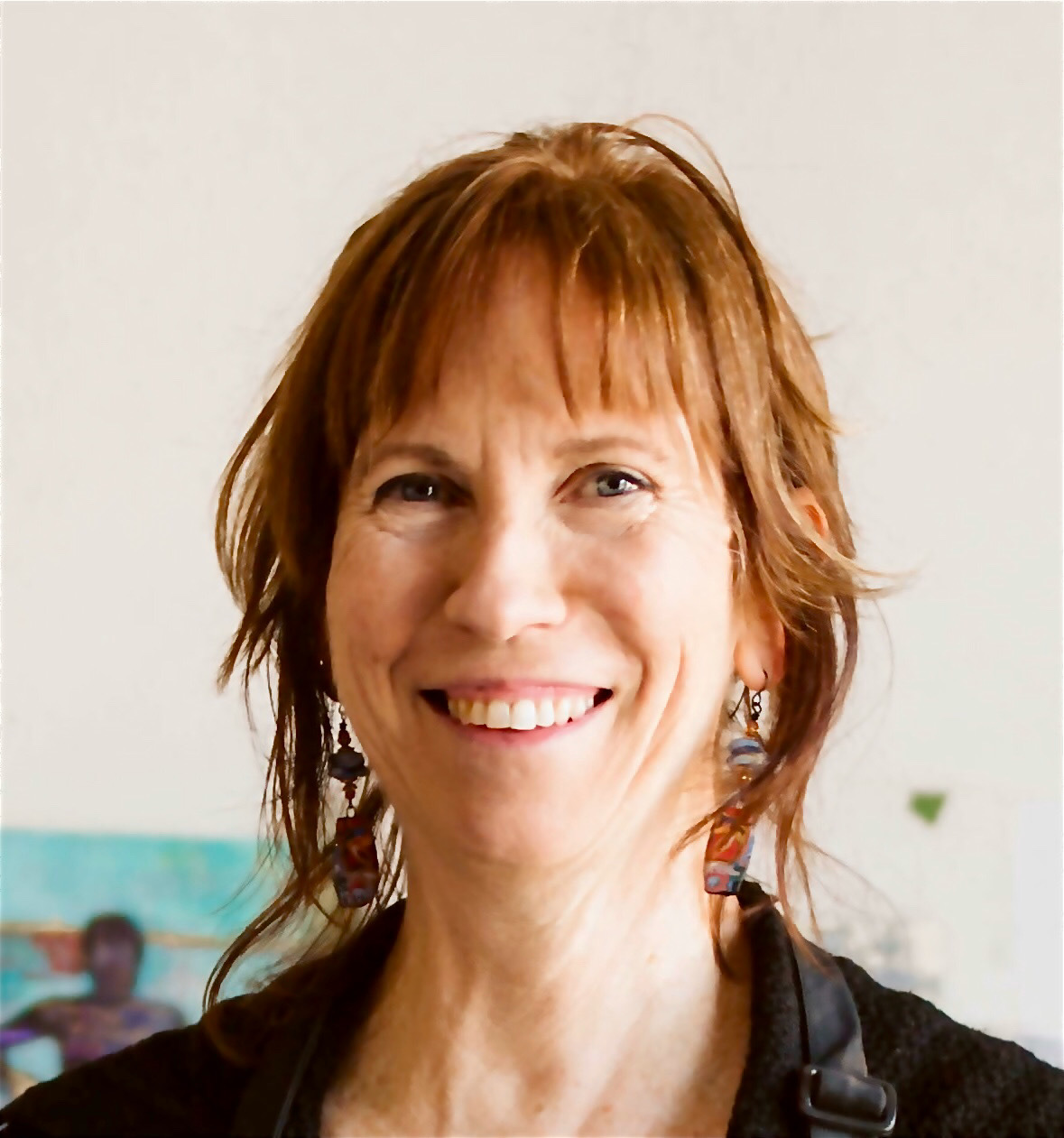
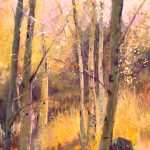


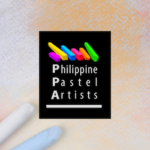

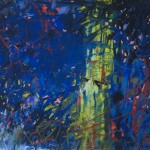
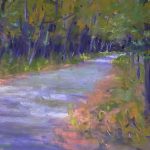


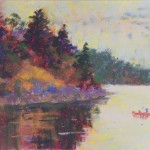





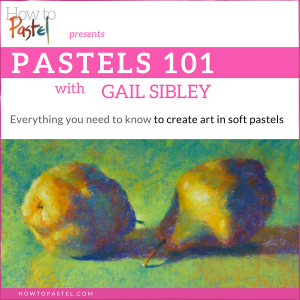


71 thoughts on “Jeanne Rosier Smith On Finding Her Artistic Voice”
I so enjoyed this blog and thank both of you!
Marsha, wow thanks for your FAST comment! I feel like I just posted the blog. Glad you enjoyed it!
Hi Gail and Jeanne.Thank you for such a wonderful Blog and sharing your journey Jeanne.
Big Plans is a great Pastel.A wonderful image,but more importantly to you Jeanne,your two Sons and playmate.A record of a cherished memory.
Roar of the Sea is my favourite seascape,because it shows more of the surf and because it is very realistic.Love the colours!.
Winter Dance is my overall favourite.To me,the Seaside is very pretty,but it doesn’t match the beauty and serenity of a winter wood.It is also very realistic
You’ve done some beautiful work Jeanne.All the best for the future.
Ed glad you liked the blog and thanks so much for your sharing the pastel paintings you like best. I am sure Jeanne will find reassurance that your favourite is a landscape!
Hi Ed, Thanks for the comment and glad you like Winter Dance! I have recently really fallen in love with painting woods–trees have always posed a challenge for me and only in the past year have I felt like I am beginning to figure them out. While I love the sea, I LIVE in a very wooded area so this is my reality.
I went to Jeanne’s demo at IAPS in 2015 which I really enjoyed and this blog is quite inspiring.
I think that there is also a New Zealander in this same magazine you mentioned.
Wow lucky you Glenys! So you can really really bring to mind how these paintings developed. Glad this article has inspired you.
And yes, I think there’s an article on Julie Freeman in the magazine
This was most interesting. As one who grew up by the ocean and spent most of the summer chasing waves I found her work inspiring. I thought she shared a wonderful clear way of approaching her art. I learned a lot. I do ocean scenes but more about people on the beach using reference photos and my own memories as well as wet lands
Each is an experiement regardless of outcome. I just don’t get to do it enough
Hi Ruth, happy you learnt from Jeanne’s blog post.
You are right about each piece being an experiment – we just never know how a piece is going to end up! I encourage you to do more!
I agree, Ruth, I love your point about experimentation. Each new venture is an experiment, and all the better when they work out and you get a great painting; that’s a bonus! I love approaching each painting with a sense of adventure and play.
I can’t possibly choose one favorite painting! I love Jeanne’s seascapes. It is a subject I would like to try. I like her idea of doing the thumbnails for her seascapes on toned paper, so that she can use white charcoal pencil for the foam. Great idea!
I relate to Jeanne’s expression of how changing one’s subject can elicit either favorable or unfavorable responses. I typically work in a fairly representational style. When I do one of my occasional abstracts, I get a very mixed reaction. Some love them, while others seem disappointed. I love the occasional break from realism, yet tend to hold back showing them for fear of confusing my followers.
Thank you Jeanne for an informative and inspiring blog. I really enjoyed reading it!
Hah hah Susan! I think my question was kind of a crazy one!
I know, I too love the idea of thumbnails on toned paper – so effective.
And like you, I related to Jeanne’s issues over changing up subject and like you, style. It’s fun to stretch where you feel you need to go as an artist yet it can be dismissed or even disdained by others. But we can’t let that stop us from expressing what we need to express!
Thanks for your comments Susan! For me it helps to stay more focused on what I’m interested in than on what others think–as that will always end up driving me nuts if I think about it too much! Happy painting, and glad to hear others are working in both abstraction and realism…that’s my next adventure I think.
Yes -I also thoroughly enjoyed reading Jeanne’s ‘On finding her Artistic Voice’ and have looked up an author she mentioned on the online library service and reserved it. I also love painting the sea – not quite confident to attempt crashing waves yet but Jeanne has given valuable insights.
I so enjoy your style of delivery on this site Gail, and your pastel work is wonderful. Thank you so much for all the prep and work you do to present us with inspiration, information and instruction – I really appreciate it!
Chris I so appreciate your enthusiastic compliments! Thank you!!
Glad you enjoyed Jeanne’s post. Maybe you’ll be inspired now to try rolling waves and surf. And happy you were motivated to look up on of the excellent resources Jeanne mentioned – but which one I wonder?!
Really enjoyed this blog from Jeanne! I love her seascapes so much – one thing though, I was hoping she might have told us about how she does her underpainting? Is it just pastel and water or does she use alcohol to make them into paint? Whatever she uses its wonderful to see the work in progress shots of her amazing work! Thanks as always for an informative and entertaining blog Gail! Oh and well done indeed on the mag article and cover!
Yay Lynn! And great question which I will leave Jeanne to respond to directly. I loved seeing the progress shots too – always amazing to see a work evolve out of smoosh!
Hi Lynn,
I use alcohol in my underpaintings and a soft watercolor brush. There are a couple of you-tube videos online of me, and also I have a DVD that shows you step by step how to do it if you’re interested. International Artist will be coming out with an article at some point with a step by step wave demo as well so you could keep an eye out for that. Thanks!
Jeanne
A wonderful read! Thank you! Congratulations on making it onto the cover of Pratique des Arts Pastel. Love that image. The heat is palpable.
your blog always inspires me to do more!
Thanks so much Cathyann! Love that you are inspired to do more!
And a special thank you for your kind comment about my painting on Pratique des Arts.
I just love reading these blogs as an opportunity to delve into other artists journeys and discoveries. Jeanne’s work is stunning and I caught a nugget of brilliant technique that I can’t wait to try, “a toothbrush charged with wet white pastel, create liquid splash in the highlights.” That totally makes sense to me and now that I see how it can be employed, I will try it out. Thanks for asking Jeanne to share her talent and insight!
I know! Wasn’t that nugget worth the price of admission? Thanks for pointing out Curt as it was just slipped in quietly by Jeanne! Glad you enjoyed the whole story.
Thanks Curt–glad you liked that! I will tell you that Terry Ludwig told me about that trick. He actually told me about it several years before I built up the nerve to try it–insisting I would love it–but I just could not envision it. Then once I actually tried it I couldn’t get enough of it! That guy knows what he’s talking about.
I have twice taken courses with Jeanne when I lived in Massachusetts. She is a wonderful teacher and a super nice person. I learned a lot from her and the two still lifes done in those courses still hang on my wall and are much admired.
Carol thanks for sharing your experience of Jeanne as a teacher. I think your testimonial will help convince others to take a workshop with Jeanne if they have the chance.
Aww thanks Carol! miss you!!! Hope you get back up this way sometime soon!
So excited to read this blog post by Jeanne . Thanks for the generous explanation of your process. The use of white charcoal for wave sketches on toned paper. The use of wet pastel to create foam spray is genius! I want to try that yet I’m sure one must use quite carefully !
You state you want to lay in the power and movement of the wave and in contrast with the softness of the foam. “On The Edge” does that! Love your work! Thank you for the tips. Thanks Gail for this article !
Sandi yes – weren’t those tidbits fabulous info?! Perhaps Jeanne will be willing to expand on her use of the toothbrush as I too am very curious as to how she does it. Thanks for pointing out that “On The Edge” creates the effect Jeanne wanted to achieve!
Hi Sandi, thanks for your thoughtful comment, and you are right–easy to overdo the spray and so easy to get carried away because it’s fun. Hope you have fun trying some of these techniques.
Jeanne
I really enjoyed reading about Jeanne’s artistic journey. Thank you for asking her to be a guest on your blog.
It’s always fascinating to read an artist’s journey and Jeanne’s didn’t disappoint! Glad you enjoyed it Jane.
Thank you Jane! Glad you enjoyed it!
Wonderful!! So glad someone else started with Nupastels, and LOVES waves like I do!! This work is phenomenal and inspirational!
Happy happy you are inspired Tiffany! Look forward to seeing your wave paintings in the Facebook group! https://www.facebook.com/groups/howtopastel/
Jeanne, thank you for sharing your journey and your fabulous paintings!
Gail, what a lovely surprise to see your wonderful painting on the cover of Pratique des Arts, along with articles from both of you. Great timing for the July blog!
Thanks Gailen!
It really was a surprise about the cover. I thought they might alert artists of this kind of thing but apparently not! And yes the timing was perfect.
Gailen, You’re welcome, I really enjoyed it.
This was great, loved that she shared her thoughts, technique, and demo! Thank you.
Whoo hoo! Thanks Jackie! Always good to hear when a reader gets something out of the blog posts!
Thank you Jackie! So happy you enjoyed it!
Hi Gail,
Thanks for your lovely and inspiring website!
I am always looking forward to your next post.
Here’s my question: do you also do pan pastels?
Or would you like to write something about them one day?
Kind regards, Nika
Nika, thank you!
To answer your question, no I haven’t used Pan Pastels. I’ve always loved the varied mark-making possibilities of pastels sticks. I think that’s the reason I haven’t explored that avenue. Is this your preferred way of using pastels?
Thank you Marsha, and thank you Gail for inviting me and putting this together so beautifully!
Thank you so much Jeanne for guest posting! It was wonderful to share your journey.
I can’t decide whether I like “Winter Dance” or “On the Edge” better. They are both outstanding works that express not only your skill and vision but also your Essential Self. Thank you so very much for sharing your work and your process, also.
Sue, love how you have expressed how Jeanne’s paintings reflect her essence! And yes, I know what you mean about deciding! A very unfair question 😀
Thank you Sue! I appreciate it! I love painting both winter and summer scenes–it took me a while to fall in love with winter painting, but I fell hard.
I very much enjoyed this blog on Jeanne Rosier Smith, Gail. Many thanks to you both!
Gail, I don’t comment much on blogs but I take this opportunity to say that every one of your “featured artist” blogs is inspiring and enjoyable reading.
Congratulations on being on the cover of Pratiques des Arts! Wishing you continued success, Sandra
Sandra thanks so much for taking the time to comment. It really does my soul good to know that you are inspired by the articles you find here! I’m glad Jeanne’s post motivated you to share your thoughts. Thank you!!
I completely understand Jean’s fascination with waves. When my kids were young, we would go sailing every Sunday on Lake Michigan. People would ask: Doesn’t it get boring and repetitive? No, the wind, light, temperature, colors and challenges were always changing. For Jean, it is as though each wave has its own personality. For me, each field of grass has its own. Really enjoyed this blog.
Amy love that you shared the sailing/painting analogy! So right on. Looking deeply opens our eyes to all that is there.
I agree with you Amy, I feel the same way and I think that once you fall in love with a subject you do start to understand it in a more deeply creative way which makes it even more rewarding to paint. We’ve got a lot of grassy meadows around here too that often tempt me! You have a wonderful eye–I love your instagram shots.
Thanks Gail for another interesting guest blog. Jeanne’s painting ‘Before the Fall’ brought to mind my dare devil days as a ten year old riding the crest of a wave in a truck’s inner tube just before the breaking point. You miss that; you ‘ll be in big trouble. But what a feeling when you go over that crest! It’s a testament of the artist’s skill that that painting could evoke that memory. I like her colour scheme. Well done.
Cliff I LOVE that Jeanne’s painting revived that memory and that you described it so viscerally for us. I can feel how you felt. Thank you!!
That description just makes my day. It’s exactly the feeling I’m trying to evoke and the kind of memories I work from. Love it! thanks.
Inspirational! A wonderful philosophy, great technique. I love the demo. Thank you for such a very interesting and motivating article. I love Jeanne’s paintings too.
Neil (Shropshire England)
Happy to know you have been inspired Neil! And motivated – does that mean more painting on the horizon? 🙂
Thank you Neil!
Hi Gail and Jeanne,
Thank you for your inspiring posts. Keep up the great work!
Lorenzo Chavez
Thanks Lorenzo. Good to hear from you!
Thanks Lorenzo, I appreciate it! Cheers from the East Coast.
It’s great to see a “wet” subject being painted with a dry medium. I rather prefer the waves with greeny-brown colours, they are closer to our somewhat darker-toned seas here in Britain. Also to see Elizabeth Mowry’s work mentioned as inspiration….I have two of her books and find her work delightful. Really enjoyed this post and Jeanne’s paintings.
I never really thought about that Chris – that we have dry medium representing a wet subject. Cool. I also have two of Elizabeth Mowry’s books and found them very inspirational when I was just starting in pastel!
Hi Chris, absolutely true, the colors are different in different oceans (Atlantic is definitely greenish, Pacific is much bluer, tending to turquoise, and different again from the Mediterranean, the Gulf of Mexico, the Adriatic…and even the Atlantic which I know the best is different in different areas, and at different times of the year depending on water temperatures, recent storms, and the cycle of the Gulf Stream. Most of my paintings are of the beaches of Cape Cod and Nantucket, and some from the Mid-Atlantic area and North and South Carolina. So: lots of greens.
Gail, thanks for featuring Jeanne Rosier Smith, her honesty and willingness to share her journey are both helpful to those of us who aspire to find our “sweet spot” in the pastel medium world.
There is so much impressive talent out there as you bring to light in your monthly blogs. Congratulations to you on having your work featured on the cover of Practique des Arts!
It’s such a pleasure for me to bring the words and images of these pastel stars to the HowToPastel blog. I’m glad you enjoyed Jeanne’s post so much Karole!
Thanks Karole glad you liked it! 🙂
What a wonderful post! I am 2 years into my journey and have had no formal instruction so I rely heavily on books and videos. Thanks so much for including those book titles in this wonderful post. I am very inspired by your work and Gail’s work as well. EXCITED!!!! I’m feeling lucky to find just what I needed when I needed it! Thank you both!
Oh it makes me shiver with delight at such synchronicity! I’m so happy this came to you at just the right moment Wendy! I’m excited for you!!! I have added links to all the books within the post and also at the bottom.
Merci!
thanks for sharing your first work, I started one year ago with three little one under 4 and your blog is really inspiring.
I love your work.
Laurie, thank you for sharing a wee bit of your world with us. Brava to you painting with three very young children 👏